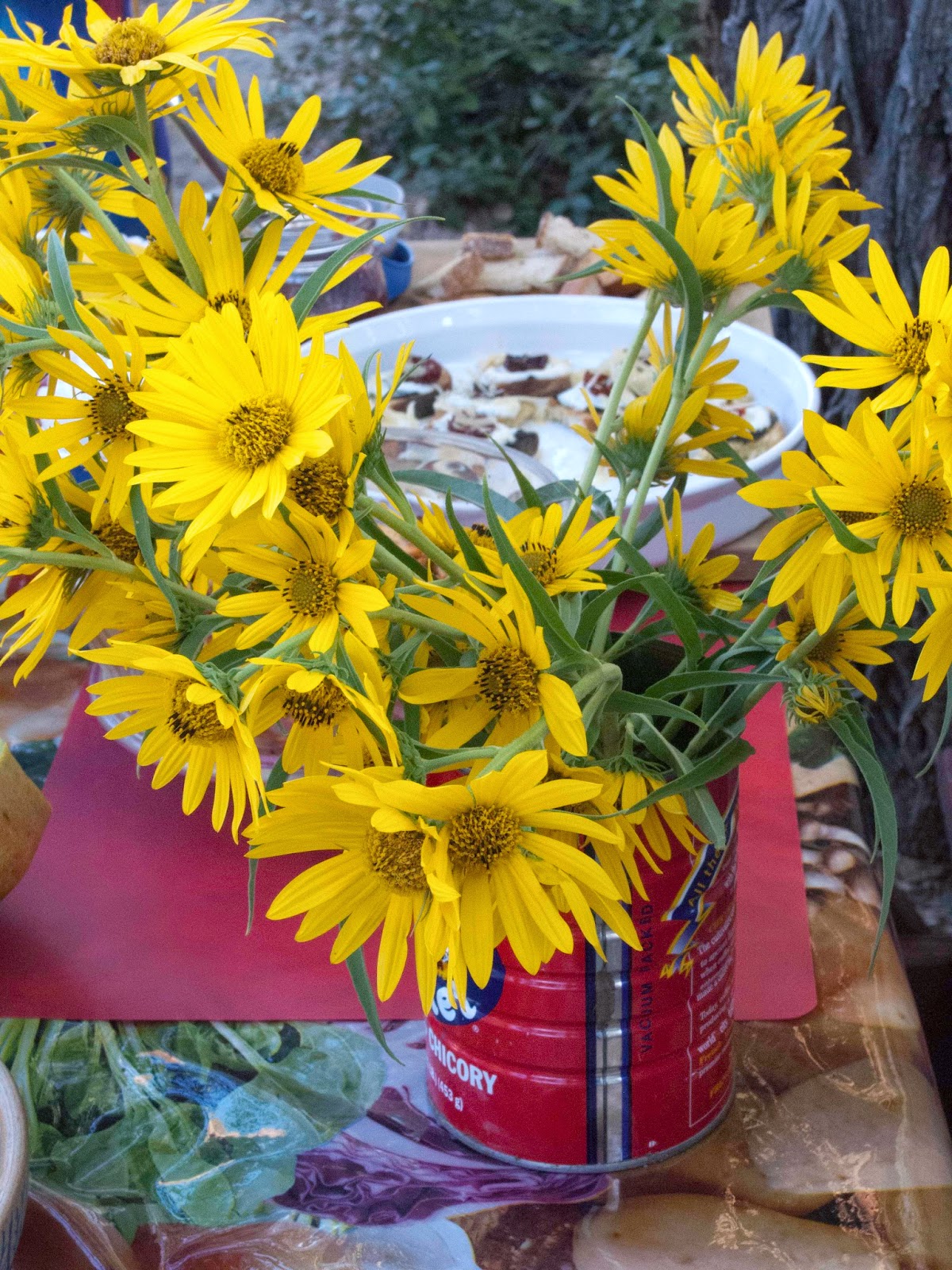Winter crops are planted to replenish and rest the soil in between growing seasons. Sometimes called ‘green manure’, these cover crops can also be planted between crop rotations during a (long) growing season. The plants function to add organic materials to the soil, particularly nitrogen, and to loosen and aerate the soil. As you might imagine, these cover crops need to be removed from the row before they go to seed, and several weeks before the bed is replanted (to allow time for breakdown of any plant matter left in the row.)
Turning under the cover crop can be done several ways. First, the plants are cut close to soil level. You can then save the cuttings for the compost or set them aside for use as mulch once you have finished preparing the bed.
The remaining stubble can then be chopped and turned under.
For gardeners who follow a no-till system, the vegetable seeds can simply be planted in between the stubble. The new seedling roots will break down the cover crop root clumps over time.
If planting between the stubble doesn't work for you, a slightly more elaborate no-till method is to smother the stubble. To do this, the row is first mulched (a good use for the plants you just cut!) and then covered with the gardener's friend, black plastic. (According to the source blog - link below - you can even skip cutting the crop to the soil line and go straight for the smother.)
Allow at least two or three weeks for the black plastic to work its magic before you plant the vegetable seeds.
Some ideas for the cover crop are given below and are taken directly from the source material.
Hardy legumes
These nitrogen-fixing crops provide a fertilizer as well as organic matter. Planted in fall, they grow slowly until late winter when growth speeds up. Legume crops may not mature until May in some regions. Cut down these cover crops in spring before they go to flower, then till them under.
Hairy vetch (Vicia villosa): Grows to 2 feet high; hardy to -15° F. Hairy vetch is considered the hardiest annual legume. Vetch tolerates poor soil, and matures late. Sow 1 to 2 pounds per 1,000 square feet.
Field pea (Pisum arvense and P. sativus): Grows 6 inches to several feet tall. Field peas are hardy to 10 to 20°F. ‘Austrian Winter’ pea is low growing and late maturing. ‘Magnus’ grows to 5 feet. Sow 2 to 4 pounds per 1,000 square feet.
Berseem clover (Trifolium alexandrinum): Grows 1 to 2 feet high. Berseem clover is hardy to 20° F. Produces high amounts of nitrogen. Sow 2 pounds per 1,000 square feet.
Crimson clover (T. incarnatum): Grows 18 inches high, and is hardy to 10° F. Crimson clover matures late and fixes less nitrogen than other clovers. Sow 1/2 to 2 pounds per 1,000 square feet. If allowed to go to seed, Crimson clover can become an invasive weed.
Grasses
Cover crops from the grass family grow quickly, tolerate cold, and improve the structure of compacted soils. Thickly sown grasses add increased organic matter in comparison to legumes.
Grasses also control erosion which is a real benefit in wet regions. Grasses do not have the benefit of fixing nitrogen as legumes do. Annual grass cover crops are cut down or mowed in spring before seeds set, and then tilled under.
Annual ryegrass (Lolium multiflorum): Grows 2 to 3 feet high; hardy to -20° F. Fastgrowing and tolerates flooding. The seeds are inexpensive, and the grass is very hardy. Ryegrass can become weedy. Sow 1/2 to 2 pounds per 1,000 square feet.
Winter rye (Secale cereale): Grows 4 to 5 feet tall; hardy to -30° F. Best grass for cold winter climates: tolerant of low fertility, acidic soils. Sow 2 to 3 pounds per 1,000 square feet.
Oats (Avena sativa): Grows 2 to 3 feet tall: hardy to 10 to 20° F. Produces the least organic matter of grasses, but is tolerant of wet soils. Oats usually succumb to winterkill, but the residue is still beneficial to the soil. Sow 2 pounds per 1,000 square feet.
Barley (Hordeum vulgare): Grows 2 to 3 feet tall; hardy 0 to 10° F. Fast maturing and tolerant of dry and saline soils: intolerant of acidic soil. Sow 2 to 3 pounds per 1,000 square feet.
A common mix offered by seed companies is hairy vetch and annual rye. The vetch fixes atmospheric nitrogen, while the rye uses leftover nitrogen. Nitrogen from the decomposing vetch will cause the rye to decompose more quickly and not tie up nitrogen as long.
To plant cover crops, sow seeds at least 30 days before the first expected fall frost date in your growing region. For cover crops that are only marginally hardy in your area, push back the sowing date to 60 days before the first frost. The more established a cover crop is before winter the more likely it will overwinter successfully.
The information for this post came from two posts of a single blog:
Click
HERE for more information on the basics of winter crops to plant and why.
Click
HERE for more information on turning winter crops under.













